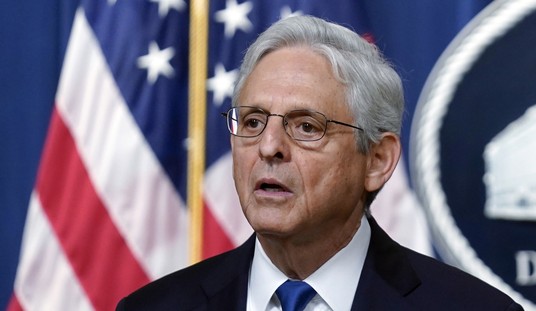“Can We Trust The New York Times After the Abramson Debacle?”, asks Joe Concha, who is described by the Daily Beast as “a media and pop-culture analyst who regularly appears on CNN and Fox News. He’s written for Mediaite, FoxSports.com, NBCSports.com and The New York Times.” Regarding that last source, Concha writes:
If you believe Abramson’s account, The New York Times has advocated equal pay with 90 stories in three years but did not extend that courtesy to its most powerful employee.
If the Times or Abramson, or both, is fibbing here, the credibility of the newspaper of record is now suspect. The Times may never be able to do another story on equal pay—no matter how the Abramson saga shakes out—without enduring a public execution from the social media mob for even daring to go there. If another high-profile female executive is suddenly terminated, the Times’ reporting of that story may be met with cynicism based on the way it handled the Abramson episode.
If we don’t trust what The New York Times says about itself, can we believe what it says about the rest of the world it reports on?
“A divorce is like an amputation: you survive it, but there’s less of you,” the great (albeit relatively unknown) essayist Margaret Atwood wrote.
In this breakup, it’s just another sad case of he said, she said, with The New York Times as the punchline—coming out less than it was before.
And in the process, there’s also less trust in a once-great newspaper from readers who thought the Grey Lady was above this sort of thing.
In 1992, New York Magazine reported that Pinch Sulzberger “told a crowd of people that alienating older white male readers means ‘we’re doing something right.’”
In 1999, the New Yorker reported the infamous story regarding Sulzberger as a young man telling his father — a former Marine who served in World War II — that given a choice between American and NVA causalities in Vietnam, “I would want to see the American get shot. It’s the other guy’s country; we shouldn’t be there.”
In 2001, Howell Raines, then editor of the New York Times, admitted, in a classic Freudian slip, that sex and skin color trumped the quality of the Times’ product:
In a speech before the National Association of Black Journalists in 2001, Raines specifically cited [Jayson] Blair as his star example of a hiring campaign that “has made our staff better and, more importantly, more diverse.”
From 2001 until mid-2003, the Times ran nearly 100 stories on the Augusta National Golf Club, flooding the zone, Saul Alinksy-style, with the vital national goal of making a golf course go co-ed. This despite other minor stories in the news such as 9/11, and American troops entering Afghanistan and Iraq in the opening stages of the Global War on Terror.
On the morning of September 11th, 2001, the Times published a fawning piece on former Weatherman Bill Ayers and his bombing of the Pentagon. The following year, the Times published a fawning piece on Chesa Boudin, the son of David Gilbert and Kathy Boudin, also members of the Weather Underground, who was raised by Ayers after his parents did time in prison for a 1981 robbery of a Brinks armored car that left a guard and two policemen dead.
In 2003, Jayson Blair resigned as a reporter at the Times, “when it was learned that he had recently plagiarized from an article that had originally appeared in the San Antonio Express-News. A subsequent investigation led by Times editors, staffers, and external reporters found that 36 of the 73 news stories attributed to Blair since October 2002 contained plagiarisms or lies.”
In the summer of 2011, Bill Keller, nearing the end of his tenure as Raines’ replacement, wrote a vicious attack on the religious faith of those on the GOP presidential campaign trail, making a telling error in labeling their beliefs in the piece as initially published:
This year’s Republican primary season offers us an important opportunity to confront our scruples about the privacy of faith in public life — and to get over them. We have an unusually large number of candidates, including putative front-runners, who belong to churches that are mysterious or suspect to many Americans. Mitt Romney and Jon Huntsman are Mormons, a faith that many conservative Christians have been taught is a “cult” and that many others think is just weird. (Huntsman says he is not “overly religious.”) Rick Perry, Michele Bachmann and Rick Santorum are all affiliated with fervid subsets of evangelical Christianity, which has raised concerns about their respect for the separation of church and state, not to mention the separation of fact and fiction.
Rick Santorum is a Catholic. Michele Bachmann is a Lutheran. These are “fervid subsets of evangelical Christianity”? The following year, fellow Timesman Charles Blow would continue the Other-ising of Republicans with his infamous “stick that in your magic underwear” tweet directed at finalist Mitt Romney. Last year, Ta-Nehisi Coates other-ised the entire city of Manhattan — aka, the Times’ core readership — by declaring its citizens racist.
Keller was replaced by Jill Abramson, who, as I wrote last week, came in with a religious slant all her own, famously declaring, “In my house growing up, The Times substituted for religion. If The Times said it, it was the absolute truth” — only to have that quote airbrushed out of the Times hours later.
Last night Timesman David Carr, a transplanted former resident of Minnesota, who in 2011 declared the American midwest “the dance of the low-sloping foreheads,” ended his take on the Abramson debacle by paraphrasing, without attribution, Spock from Star Trek II:
Before I came to work here, Gerald Boyd, the crusty — or should I say “pushy”? — managing editor who would eventually be swept up in the Jayson Blair affair, was interviewing me. I could tell it was not going well. He was skeptical of my lack of daily experience and my more noisy tendencies. I finally realized what he was waiting to hear.
“I understand that if I come to work at The New York Times, the needs of the many will frequently supersede the needs of the one,” I said.
I meant it when I said it and I learn the truth of it with each passing day.
How sophomoric. If you still believed, when the Abramson story broke last week, that “the Grey Lady was above this sort of thing,” as Concha writes in the Daily Beast, then you’ve either internalized the same religious beliefs about that paper that Jill “Balls Like Cast-Iron Cantaloupes” Abramson professed, or you simply haven’t been paying attention for the last 20 years — or both.
Related Metaphor Alert: For the MSM, is the Jill Abramson story “Jillghazi” as New York magazine dubs it, or is it the equivalent of CNN and Flight #370? Flood the zone!
Update: A Marxist interpretation of Abramson’s woes — or to put it another way, Say the secret dialectic and you get to bitch about your half-million dollar annual salary…










Join the conversation as a VIP Member